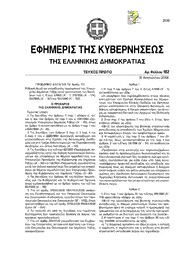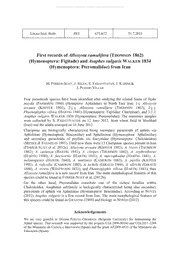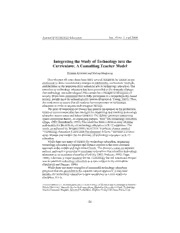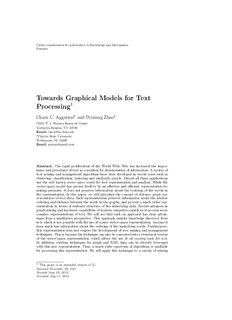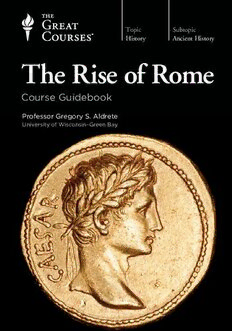
Preview The Rise of Rome
Topic Subtopic From great leaders to everyday citizens, delve into the early days and the dramatic collapse of the Roman Republic. History Ancient History “Pure intellectual stimulation that can be popped into T h The Rise of Rome the [audio or video player] anytime.” e R —Harvard Magazine i s e o “Passionate, erudite, living legend lecturers. Academia’s f R Course Guidebook best lecturers are being captured on tape.” o m —The Los Angeles Times e Professor Gregory S. Aldrete “A serious force in American education.” University of Wisconsin–Green Bay —The Wall Street Journal Gregory S. Aldrete is the Frankenthal Professor of History and Humanistic Studies at the University of Wisconsin–Green Bay. He received his Ph.D. in Ancient History from the University of Michigan. Professor Aldrete is the author or coauthor of numerous books in history, archaeology, and philology, including Daily Life in the Roman City and The Long Shadow of Antiquity. He has received numerous awards for his teaching and research, including two fellowships from the National Endowment for the Humanities. THE GREAT COURSES® Corporate Headquarters 4840 Westfields Boulevard, Suite 500 Chantilly, VA 20151-2299 USA G Phone: 1-800-832-2412 u www.thegreatcourses.com id e Professor Photo: © Jeff Mauritzen - inPhotograph.com. b Cover Image: © Hoberman/UIG/Bridgeman Images. o o Course No. 3350 © 2018 The Teaching Company. PB3350A k PUBLISHED BY: THE GREAT COURSES Corporate Headquarters 4840 Westfields Boulevard, Suite 500 Chantilly, Virginia 20151-2299 Phone: 1-800-832-2412 Fax: 703-378-3819 www.thegreatcourses.com Copyright © The Teaching Company, 2018 Printed in the United States of America This book is in copyright. All rights reserved. Without limiting the rights under copyright reserved above, no part of this publication may be reproduced, stored in or introduced into a retrieval system, or transmitted, in any form, or by any means (electronic, mechanical, photocopying, recording, or otherwise), without the prior written permission of The Teaching Company. Gregory S. Aldrete, Ph.D. Frankenthal Professor of History and Humanistic Studies University of Wisconsin–Green Bay regory S. Aldrete is the Frankenthal Professor of History and Humanistic G Studies at the University of Wisconsin–Green Bay. He received his B.A. from Princeton University and his Ph.D. in Ancient History from the University of Michigan. His interdisciplinary scholarship spans the fields of history, archaeology, art history, military history, and philology. —i— Among the books Professor Aldrete has written or edited are Gestures and Acclamations in Ancient Rome; Floods of the Tiber in Ancient Rome; Daily Life in the Roman City: Rome, Pompeii, and Ostia; The Long Shadow of Antiquity: What Have the Greeks and Romans Done for Us? (with Alicia Aldrete); and Reconstructing Ancient Linen Body Armor: Unraveling the Linothorax Mystery (with Scott Bartell and Alicia Aldrete). Professor Aldrete has won many awards for his teaching, including two national ones: He was named the Wisconsin Professor of the Year by the Council for Advancement and Support of Education and the Carnegie Foundation for the Advancement of Teaching, and he received the American Philological Association Award for Excellence in Teaching at the College Level (the national teaching award given annually by the professional association of classics professors). At the state level, he was selected from among all professors in the University of Wisconsin System to receive a System Regents Teaching Excellence Award, and his campus granted him its highest teaching award, the Founders Association Faculty Award for Excellence in Teaching. Professor Aldrete’s research has been honored with a number of fellowships, including two year-long humanities fellowships from the National Endowment for the Humanities (NEH) and the Solmsen Fellowship at the Institute for Research in the Humanities in Madison. Additionally, he was a fellow of two NEH seminars held at the American Academy in Rome and was a participant in an NEH institute at the University of California, Los Angeles. In 2014– 2015, Professor Aldrete was the Martha Sharp Joukowsky Lecturer for the Archaeological Institute of America, for which he gave a series of public lectures across the United States. Professor Aldrete’s innovative Linothorax Project, in which he and his students reconstructed and tested ancient linen body armor, has garnered considerable attention from the media, having been featured in documentaries on the Discovery Channel, the Smithsonian Channel, and the National Geographic Channel and on television programs in Canada and across Europe. His research has also been the subject of articles in U.S. News and World Report, The New Yorker, The Atlantic, The Chronicle of Higher Education, Der Spiegel magazine, and Military History and of Internet news stories in more than two dozen countries. y h p a Professor Aldrete’s other Great Courses are History of the Ancient World: A Global gr o Perspective; The Decisive Battles of World History; and History’s Great Military Bi or Blunders and the Lessons They Teach. ■ s s e of Pr —ii— TABLE OF CONTENTS Introduction Professor Biography ........................................i Course Scope ............................................. 1 Lecture Guides Lecture 1 • The City on the Tiber . . . . . . . . . . . . . . . . . . . . . . . . . . . . 3 Lecture 2 • The Monarchy and the Etruscans................. 11 Lecture 3 • Roman Values and Heroes....................... 20 Lecture 4 • The Early Republic and Rural Life................. 29 Lecture 5 • The Constitution of the Roman Republic .......... 39 Lecture 6 • The Unification of the Italian Peninsula............ 46 Lecture 7 • Roman Religion: Sacrifice, Augury, and Magic ..... 54 Lecture 8 • The First Punic War: A War at Sea ................ 62 Lecture 9 • The Second Punic War: Rome versus Hannibal..... 71 Lecture 10 • Rome Conquers Greece........................ 80 Lecture 11 • The Consequences of Roman Imperialism .........89 Lecture 12 • Roman Slavery: Cruelty and Opportunity ........ 96 —iii— Lecture 13 • Roman Women and Marriage.................. 102 Lecture 14 • Roman Children, Education, and Timekeeping... 110 Lecture 15 • Food, Housing, and Employment in Rome....... 120 Lecture 16 • The Gracchi Attempt Reform .................. 130 Lecture 17 • Gaius Marius the Novus Homo ................. 139 Lecture 18 • Sulla the Dictator and the Social War ........... 151 Lecture 19 • The Era of Pompey the Great .................. 159 Lecture 20 • The Rise of Julius Caesar ...................... 169 Lecture 21 • Civil War and the Assassination of Caesar....... 177 Lecture 22 • Cicero and the Art of Roman Oratory........... 188 Lecture 23 • Octavian, Antony, and Cleopatra............... 196 Lecture 24 • Why the Roman Republic Collapsed............208 Supplementary Material Bibliography ............................................ 216 Image credits............................................222 s nt e nt o C of e bl a T —iv— COURSE SCOPE The Rise of Rome he Roman Republic is one of the most famous and influential T states in all of world history, and the story of its spectacular rise and disastrous fall has exerted an irresistible fascination for the last 2,000 years. Rome’s contributions to art, architecture, law, language, religion, science, philosophy, and culture still surround and constantly affect us today. The unusual political structure of the Roman Republic has as served a model and a source of inspiration for others hoping to establish later republics that would seek to emulate ancient Rome’s success. Among the more notable of these imitators are the creators of the Florentine Republic in the Renaissance, the Founding Fathers of the United States, and the 18th century French intellectuals who established a republic in the aftermath of the French Revolution. Rome’s military triumphs have inspired generations of would-be conquerors, and the famed discipline and organization of its legions have provided models for countless later armies. This course traces this history of the Roman Republic from its humble beginnings in the 8th century B.C. as an undistinguished cluster of mud huts beside the Tiber River until it reached its peak of power in the 1st century B.C., by which time it had established complete dominance over the entire Mediterranean basin. The central theme of the course is an investigation and analysis of the various factors that account for and explain its rise, including geography, cultural values, political structure, social structures, military strategy, leadership, and economic considerations. The very successes of the Roman Republic, however, also sowed the seeds of its eventual destruction by creating a set of tensions at the heart of Roman society itself that fostered resentment among its citizens, and a fatal destabilization of its institutions. The course thus also features a deep investigation of the underlying and proximate reasons for the collapse and ultimate fall of the Roman Republic. —1— In order to place this central narrative in context, it additionally includes an examination of the period of the Roman monarchy which preceded the republic, as well as various key aspects of Roman civilization, including religion, slavery, education, food, housing, employment, the art of rhetoric, and gender roles in Roman society. The chronological narrative of the course covers the foundation of the republic and the creation of its institutions, an account of the gradual expansion of Roman power throughout Italy, and Rome’s unique policy toward the conquered Italians, which would play a vital role in its later successes. The course then presents Rome’s explosion out of the Italian peninsula and the initiation of its takeover of the Mediterranean, beginning with the republic’s dramatic battle to the death with its archrival, Carthage, led by the brilliant general Hannibal. This is followed by the conquest of Greece and the eastern Mediterranean, events which end up fundamentally transforming Rome through the infusion of vast wealth and, more importantly, by introducing Greek culture to Rome. Finally, we trace the history of the late Roman Republic, the turbulent period during which stresses undermined the republic even as it reached its peak of power. This era is also home to a sequence of some of the most famous and dynamic people in Roman history, including the dueling warlords Marius and Sulla; the ambitious, rulebreaking Pompey the Great; the superlative general and leader Julius Caesar; history’s greatest orator, Cicero; the talented but flawed Mark Antony; Cleopatra, the clever Queen of Egypt; and the wily and manipulative politician Octavian. Each of these key figures is examined in detail, and their personalities, actions, and influence are explored. This course presents a lively, engaging account of the rise and fall of the Roman Republic accompanied by insightful and in-depth investigations of the key factors and personalities that shaped its history. ■ e m o R of e s Ri e h T —2— THE CITY ON THE TIBER LECTURE 1 ome is arguably the most influential city in Western history. For Rover half a millennium, Rome dominated the Western world politically and militarily; and even when the empire fell and Rome lost its political hegemony, the city continued to be the seat of the Roman Catholic Church. In this lecture, you will consider the geographical, political, and cultural features of ancient Rome that contributed to the city’s rise to prominence. LOCATION, LOCATION, LOCATION ® Let’s say you were hypothetically planning to establish a city with the intent that it would one day conquer and dominate the entire Mediterranean. You could probably do a lot worse than placing it on the exact site where the city of Rome was actually founded. This location possessed a number of geographic advantages that would serve the Romans well over the course of their ascendancy. ® The Italian Peninsula, which famously resembles the shape of a boot, thrusts down from the north into the Mediterranean Sea at roughly the sea’s midpoint. All maritime traffic between east and west has to funnel into the narrow straits between the toe of Italy and the island of Sicily, or else circle around between Sicily and North Africa. ® The city of Rome lies about halfway down the peninsula on its western side, along the banks of the Tiber River. Thus, by a gift of geography, Rome conveniently sits at a centralized location within Italy, from which it was well situated to eventually expand and dominate the peninsula; also, Italy itself is in a central position within the Mediterranean basin, and is similarly well placed to control the broader region. ® Two important mountain ranges which further define the Italian Peninsula played roles in Rome’s history. To the north, the Alps lie across the top of the boot and separate Italy from Europe. Although pierced by a few passes, they are generally high and icy, and are a natural barrier e m hindering northern expansion, or—to look at it the opposite way— o R of e s Ri e h T —4—
The list of books you might like

Believe Me

Haunting Adeline

The Strength In Our Scars

The 5 Second Rule: Transform your Life, Work, and Confidence with Everyday Courage

Japanese Cookbook For Beginners: 2 Books In 1: 140 Easy Recipes For Traditional Japanese Sushi Bento Sashimi And Ramen
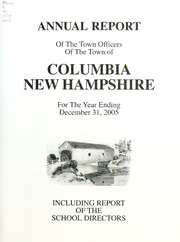
Annual report, Columbia, New Hampshire
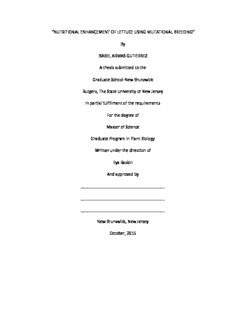
By ISABEL ARMAS GUTIERREZ A thesis submitted to the Graduate

By Irina Kossovskaia, MD, PhD, DNM
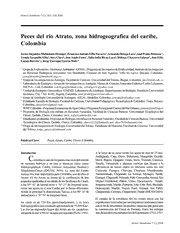
Peces del río Atrato, zona hidrogeografica del caribe, Colombia
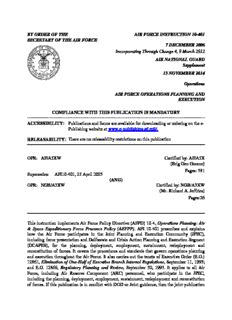
BY ORDER OF THE SECRETARY OF THE AIR FORCE AIR FORCE INSTRUCTION 10-401 7 ...
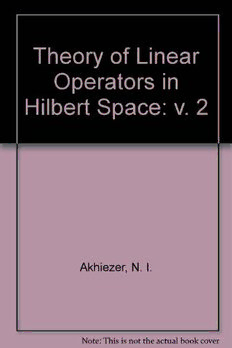
Theory of Linear Operators in Hilbert Space: v. 2
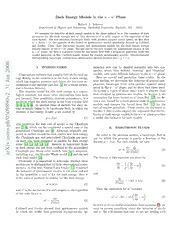
Dark Energy Models in the w - w' Plane
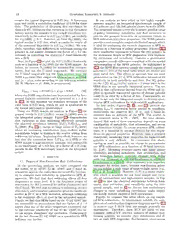
Optical Star-Formation Rate Indicators

Это было навсегда. 1968-1985.
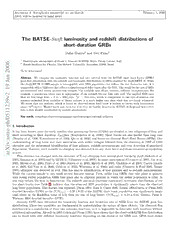
The BATSE-Swift luminosity and redshift distributions of short-duration GRBs
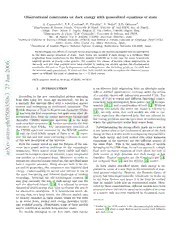
Observational constraints on dark energy with generalized equations of state
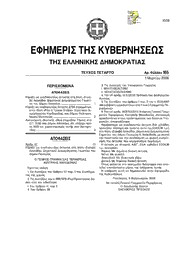
Greek Government Gazette: Part 4, 2006 no. 165
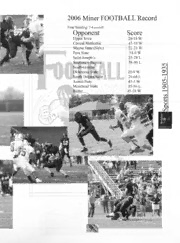
The Rollamo 2006
